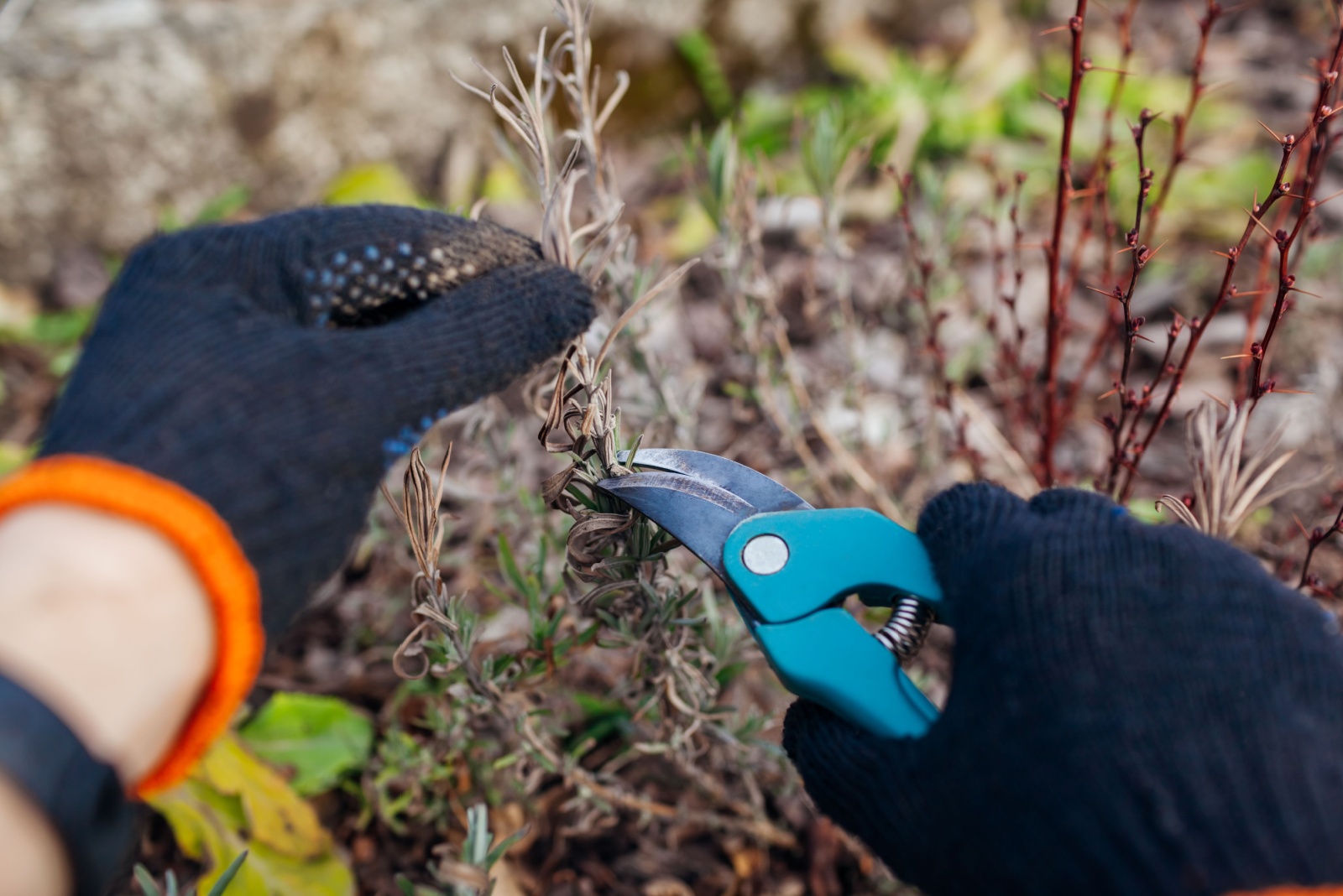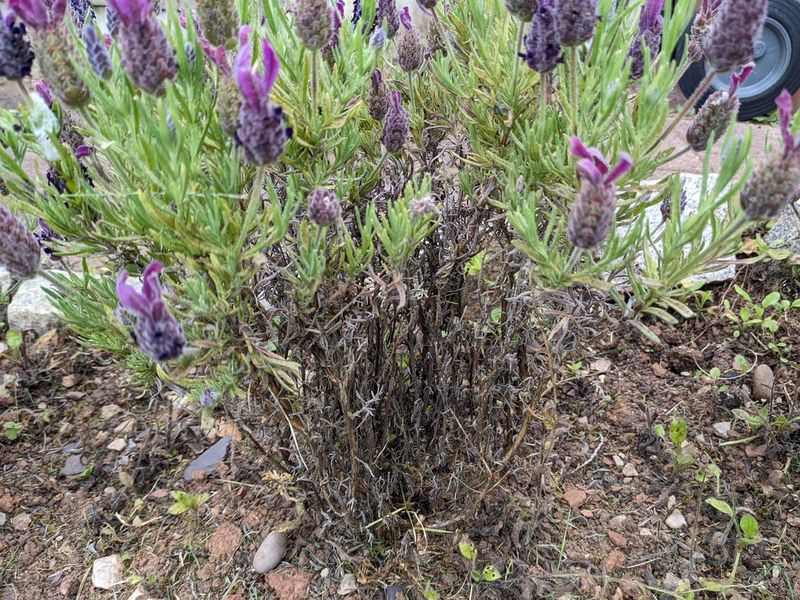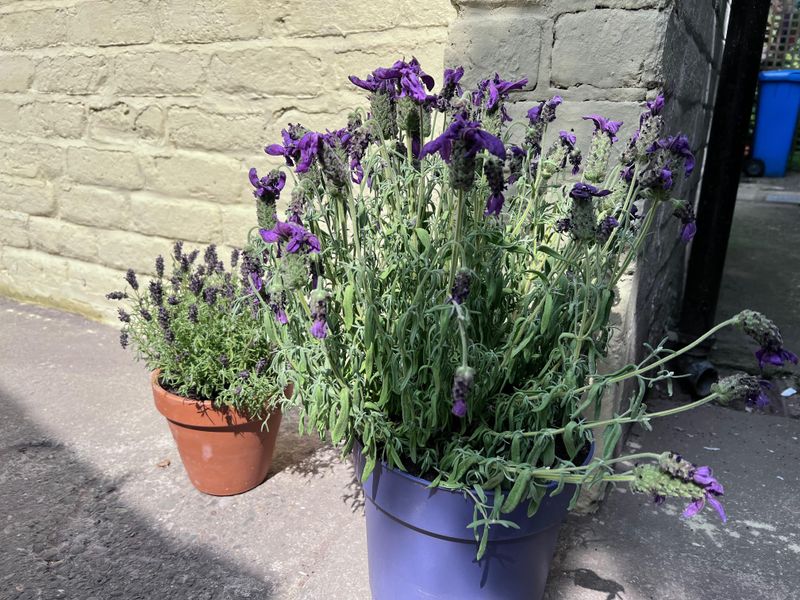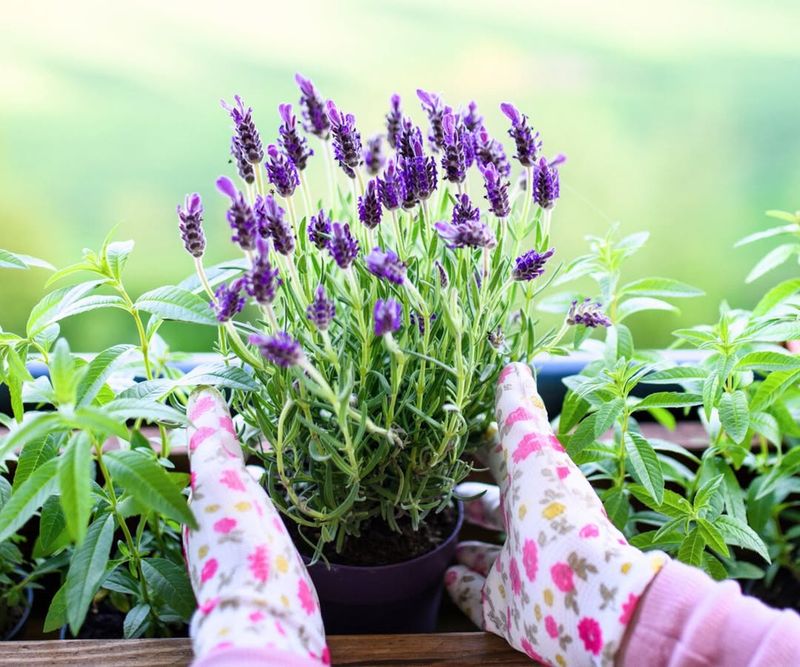Colorado winters can be tough on lavender plants, with freezing temperatures and harsh winds threatening their survival. Lavender loves sunshine and warmth, so protecting these fragrant beauties during cold months requires special care.
Learning how to winterize your lavender properly means you’ll enjoy beautiful purple blooms year after year, even in Colorado’s challenging climate.
1. Choose Cold-Hardy Lavender Varieties
Not all lavender can survive Colorado’s freezing winters. English lavender varieties like Munstead and Hidcote handle cold temperatures much better than their French cousins.
Planting the right type from the start saves you heartache later. English lavenders can survive temperatures down to negative 20 degrees, making them perfect for Colorado gardens.
Check plant labels carefully before buying to ensure you’re getting a winter-tough variety that won’t give up when snow flies.
2. Prune At The Right Time
Timing your pruning makes all the difference between a thriving plant and a struggling one. Cut back your lavender in late summer or early fall, removing about one-third of the growth.
Never prune too late in autumn or during winter months. Late pruning encourages new growth that will freeze and damage the entire plant.
Leave enough woody stems and foliage to protect the plant’s crown from harsh weather while preventing it from becoming too leggy or weak.
3. Add Protective Mulch Layer
Mulch acts like a cozy blanket for lavender roots during freezing nights. Spread two to three inches of wood chips or pine needles around the plant base after the first frost hits.
Keep mulch away from the plant’s center to prevent moisture buildup and rot. Good drainage remains critical even in winter months.
Remove excess mulch in early spring when temperatures warm up, allowing the soil to breathe and preventing fungal problems from developing.
4. Reduce Watering Before Winter
Lavender hates wet feet, especially when cold weather arrives. Cut back watering significantly in late fall to help the plant harden off for winter.
Dry soil prevents ice formation around roots that can cause serious damage. Water only if Colorado’s fall turns unusually dry and dusty, giving just enough moisture to prevent complete dehydration.
Stop watering entirely once the ground begins freezing solid, letting nature take over until spring warmth returns.
5. Provide Wind Protection
Colorado’s fierce winter winds can dry out and damage lavender faster than cold temperatures alone. Position burlap screens or create natural barriers using stones or other plants around your lavender.
Wind protection reduces moisture loss from leaves and stems during brutal dry spells. Even hardy lavender appreciates a shield from relentless gusts that strip away precious moisture.
Remove barriers in spring once harsh winds calm down, allowing full sun exposure for healthy growth.
6. Ensure Excellent Soil Drainage
Soggy soil kills more lavender in winter than freezing temperatures ever could. Lavender needs fast-draining soil that doesn’t hold water around its roots during freeze-thaw cycles.
Mix sand or gravel into heavy clay soil before winter arrives, creating pathways for water to escape quickly. Raised beds work wonderfully for lavender in Colorado’s clay-heavy areas.
Test drainage by digging a hole and filling it with water—it should drain within hours, not days.







